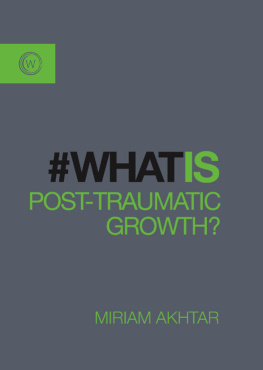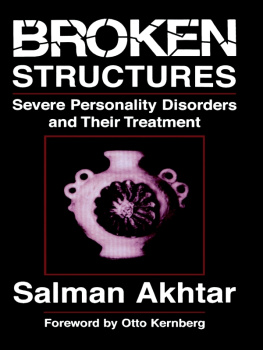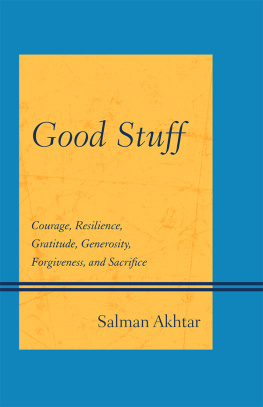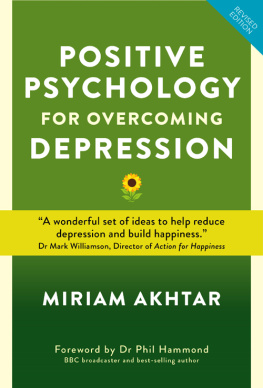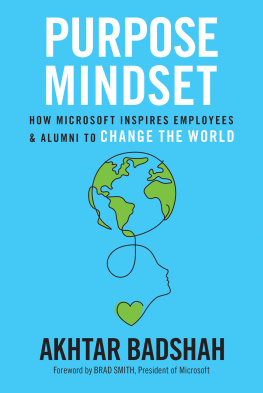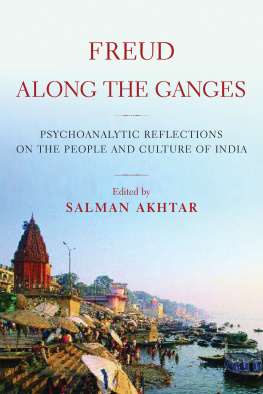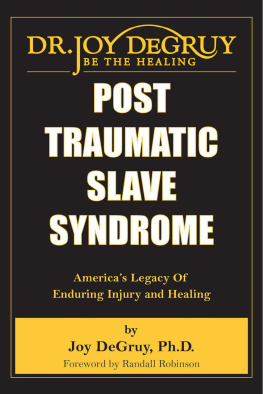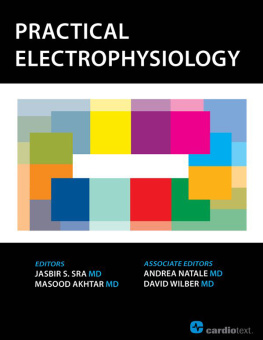Akhtar - #Whatis Post-Traumatic Growth?
Here you can read online Akhtar - #Whatis Post-Traumatic Growth? full text of the book (entire story) in english for free. Download pdf and epub, get meaning, cover and reviews about this ebook. year: 2017, publisher: Watkins;Harpercollins, genre: Religion. Description of the work, (preface) as well as reviews are available. Best literature library LitArk.com created for fans of good reading and offers a wide selection of genres:
Romance novel
Science fiction
Adventure
Detective
Science
History
Home and family
Prose
Art
Politics
Computer
Non-fiction
Religion
Business
Children
Humor
Choose a favorite category and find really read worthwhile books. Enjoy immersion in the world of imagination, feel the emotions of the characters or learn something new for yourself, make an fascinating discovery.
#Whatis Post-Traumatic Growth?: summary, description and annotation
We offer to read an annotation, description, summary or preface (depends on what the author of the book "#Whatis Post-Traumatic Growth?" wrote himself). If you haven't found the necessary information about the book — write in the comments, we will try to find it.
Akhtar: author's other books
Who wrote #Whatis Post-Traumatic Growth?? Find out the surname, the name of the author of the book and a list of all author's works by series.
#Whatis Post-Traumatic Growth? — read online for free the complete book (whole text) full work
Below is the text of the book, divided by pages. System saving the place of the last page read, allows you to conveniently read the book "#Whatis Post-Traumatic Growth?" online for free, without having to search again every time where you left off. Put a bookmark, and you can go to the page where you finished reading at any time.
Font size:
Interval:
Bookmark:
#WHAT IS

#WHAT IS
POST-TRAUMATIC
GROWTH?
The Journey from Adversity to Growth
MIRIAM AKHTAR
CONTENTS
Sometimes in life an event shakes us to the core. It could be a sudden death or the shock of a diagnosis of terminal illness. It could be something outside normal experience, like being caught in an earthquake, or a common but no less traumatic development such as a divorce. Such things have a huge impact, sending out shockwaves that can rock every corner of our world. They can leave us feeling lost, overwhelmed and vulnerable. The good news is that this doesnt have to define us. In fact it can herald a new beginning.
Post-traumatic stress (PTS) is something that we hear about a lot, for example among survivors of 9/11 and soldiers who served in Iraq and Afghanistan. The coverage has led to a growing awareness of the far-reaching effects of trauma and post-traumatic stress disorder, known as PTSD. This was first identified in military veterans (see ) but we are coming to understand that it is experienced more widely.
Although most of us will have to deal with extreme stresses at some point in life, these dont have to condemn us to eternal suffering. There can be a way ahead. If you have picked up this book because you think you, or someone you know, may be suffering from post-traumatic stress, I hope you will find it comforting to hear that something more positive may also be taking place: something that will allow us to experience positive change as a consequence of trauma. This is post-traumatic growth (PTG).
My intention in writing this book is to provide you with an introductory guide to trauma, PTS and PTG. We cant deny that traumatic experiences are both difficult and life-altering, but they can also be the catalyst for personal growth. My wish is to show that there can be a silver lining to trauma and that it can bring about a positive transformation.
Understand the nature of trauma.
Recognize the signs of post-traumatic stress (PTS).
Understand the difference between PTS and PTSD.
Discover the three major changes that happen with PTG.
Get to know the five dimensions of PTG.
Understand how PTG can change life for the better.
Learn from the stories of people whove experienced PTG.
Draw on modern science to support the healing process.
Understand the bodymind connection in trauma.
Practise self-care while going through extreme stress.
Strengthen your resilience to cope with challenges.
Use positive psychology to rebuild your well-being.
Be better equipped to support a loved one through trauma.
Understand how people grow through adversity.
Adopt a growth mindset to lay the foundations for PTG.
Discover a new sense of meaning and purpose.
Explore five pathways to PTG.
Experience the deeper form of happiness known as eudaimonic well-being (see pages ).
Feel encouraged to embark on a fresh chapter in life.
Apply new knowledge to move from surviving toward thriving.
This book aims to point you to the tools that can help you reach the light at the end of the tunnel. It is possible to emerge stronger from the most testing of times and PTG can take you toward a life of greater meaning and deeper happiness.
This book combines the science of PTG with real-life stories of people experiencing it. Apart from a few exceptions, all names have been changed to preserve the anonymity of the people who shared their stories.
In the Introduction I explain how I came to have an interest in post-traumatic growth through my work and my own personal experience. explores the transformative process of PTG and its impact on spiritual well-being.
The book is designed to make PTG as accessible as possible with the help of the following features:
A Q&A approach that, chapter by chapter, explores the questions that are often asked about PTG.
Case Study boxes that share real-life experiences of PTG.
Focus On boxes that explore particular elements of PTG and therapies that can help achieve this.
Try It boxes that give you practical exercises to try out to help you on the road from adversity to growth.
Finally, a What Next section, including a further reading list, suggests how to continue your exploration of PTG.
The following abbreviations are used throughout the book for key terms:
PTG Post-traumatic growth
PTS Post-traumatic stress
PTSD Post-traumatic stress disorder
Most of us will suffer trauma at some point in our lives. Its part of being human. When we do hit a major crisis, the extreme stress can shatter our emotional well-being and overwhelm our ability to cope. Trauma disrupts our lives, yet it used to be that people were expected to keep a lid on their emotions and just get on with it. It was a taboo subject and people were often left in despair, silently tormented by distressing symptoms such as flashbacks which could go on for years.
This book intends to challenge those taboos about post-traumatic stress, making it clear that PTS is a normal, natural response to abnormal events. Theres nothing to feel guilty or ashamed about.
Awareness of post-traumatic stress disorder has grown greatly, largely due to the increasing numbers being diagnosed with it. However, PTSD still tends to be associated with events outside normal experience, such as acts of war or terrorism. This very limited take on trauma urgently needs upgrading for the 21st century as its not so much what happens that determines whether an event is traumatic, but our subjective emotional experience of it. The truth is that the more vulnerable and helpless we feel, the more likely we are to be traumatized by all kinds of unexpected negative events, whether thats being the victim of an assault, suffering a major financial loss or facing relentless stresses from working in a toxic environment. As we search for ways to deal with the crisis, we may question all aspects of our lives as we try to make sense of the adversity.
People sometimes find it hard to recognize that they are suffering from PTS and therefore often lack the tools to help themselves. The purpose of this book is to offer a way through trauma. There is an urgent need for a more positive approach to give people hope in the bleakest of times and the confidence that something good can emerge from the suffering. I no longer see what life took from me I see what it gave me, says Tara Lal, a firefighter, whose story is one of the case studies in this book.
I first came across PTG during my training in positive psychology, which is the study of optimal human functioning what it takes to feel good and function well. One of positive psychologys concepts is of people growing through adversity. This intrigued me as I had experienced this process myself. The trauma of losing my father when I was young shaped the course of my life. I learnt that life is short and that i had to apply myself to make the most of it. When youve been through the worst thing possible, nothing else ever seems as bad or as difficult to cope with.
The loss did, however, sow the seeds for later episodes of depression, and it was through the search for a solution that I discovered positive psychology. To my relief, I found the scientifically grounded tools that helped me develop a more sustainable happiness. I went on to become one of the first people in the UK to qualify as a positive psychologist, in 2009, gaining the MAPP the MSc in Applied Positive Psychology. This course was established by Prof. Martin Seligman, the co-founder of the field, at the University of Pennsylvania, to make the world a happier place, parallel to the way clinical psychologists have made the world a less unhappy place.
Font size:
Interval:
Bookmark:
Similar books «#Whatis Post-Traumatic Growth?»
Look at similar books to #Whatis Post-Traumatic Growth?. We have selected literature similar in name and meaning in the hope of providing readers with more options to find new, interesting, not yet read works.
Discussion, reviews of the book #Whatis Post-Traumatic Growth? and just readers' own opinions. Leave your comments, write what you think about the work, its meaning or the main characters. Specify what exactly you liked and what you didn't like, and why you think so.

